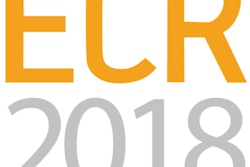
Digital breast tomosynthesis (DBT) screening costs more than a 2D mammography exam, but the technology's advocates argue that it's more effective, with higher cancer detection and lower recall rates. So is the extra money worth it? Yes, according to research presented at the 2017 San Antonio Breast Cancer Symposium (SABCS).
Over long-term follow-up -- that is, the year after screening mammography -- many of DBT's costs are comparable to digital mammography, said presenter Dr. Emily Conant of the University of Pennsylvania in Philadelphia. Conant and colleagues found that digital mammography and DBT had about the same average costs per woman screened for false-positive, false-negative, and true-positive outcomes.
 Dr. Emily Conant from the University of Pennsylvania.
Dr. Emily Conant from the University of Pennsylvania."Despite its higher initial cost, DBT is increasingly being embraced by radiologists nationwide," Conant said in a statement released by the university. "If you look at expenses associated with breast diagnosis in the following year after initial screening, DBT is more cost-effective in terms of health system or population-level screening."
Conant and colleagues analyzed 46,483 screening episodes (i.e., a single screening mammogram and all subsequent breast diagnosis-related costs for the following year) in two hospitals within the University of Pennsylvania Health System in 2012 and 2013. The group did not include any episodes in which the patient had a prior breast cancer diagnosis or reached the age of 90 before the end of the follow-up period. Of the total number of episodes, digital mammography represented 53% and DBT represented 47%.
The researchers analyzed the episodes for four outcomes: true positive, true negative, false positive, and false negative. They found that DBT was a more effective screening method: Compared with digital mammography, DBT had a statistically significant lower false-positive rate (8.6% versus 10.8%) and higher true-negative rate (90.9% versus 88.7%). There were no statistically significant differences between DBT and digital mammography episodes with respect to true-positive and false-negative rates, according to Conant's team.
DBT did cost more than digital mammography, with an overall average episode cost of $378.02 for DBT and $286.62 for digital mammography -- a difference driven by higher average screening costs ($215.94 versus $155.76) and follow-up costs ($23.67 versus $12.11).
But despite the higher cost per individual DBT study, Conant and colleagues found that digital mammography and DBT had about the same average episode costs per woman screened for false-positive ($67.75 versus $65.71), false-negative ($4.63 versus $5.60) and true-positive ($85.80 versus $65.15) outcomes. The researchers attributed the higher DBT costs for true-negative outcomes ($219.84 versus $150.16) to higher reimbursement levels for DBT paid by the U.S. Centers for Medicare and Medicaid Services (CMS).
| Cost and clinical performance of digital mammography vs. DBT | ||
| Digital mammography | DBT | |
| False-positive rate per episode | 10.8% | 8.6% |
| True-negative rate per episode | 88.7% | 90.9% |
| Overall average episode cost | $286.62 | $378.02 |
| Average screening cost | $155.76 | $215.94 |
| Average follow-up cost | $12.11 | $23.67 |
| Episode cost: False positive | $67.75 | $65.71 |
| Episode cost: False negative | $4.63 | $5.60 |
| Episode cost: True positive | $85.80 | $65.15 |
| Episode cost: True negative | $150.16 | $219.84 |
"Early detection is critical to saving lives and lowering costs," Conant said. "Fortunately, breast imaging is more precise than ever, thanks to DBT."
Study disclosures
Dr. Emily Conant is on the scientific advisory board of women's imaging firm Hologic and received a grant from the company for the study.




















